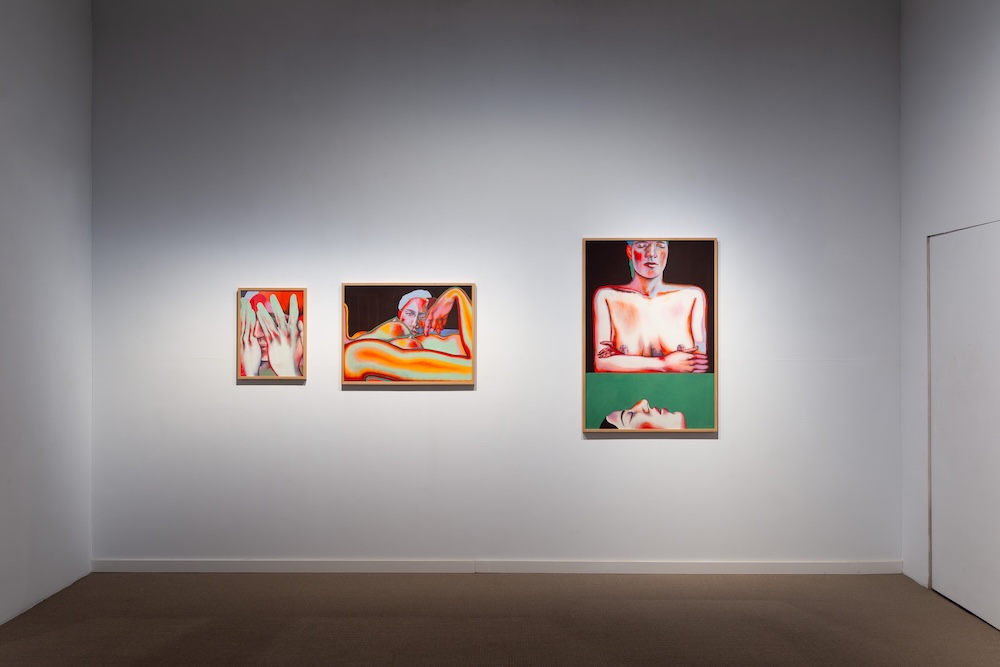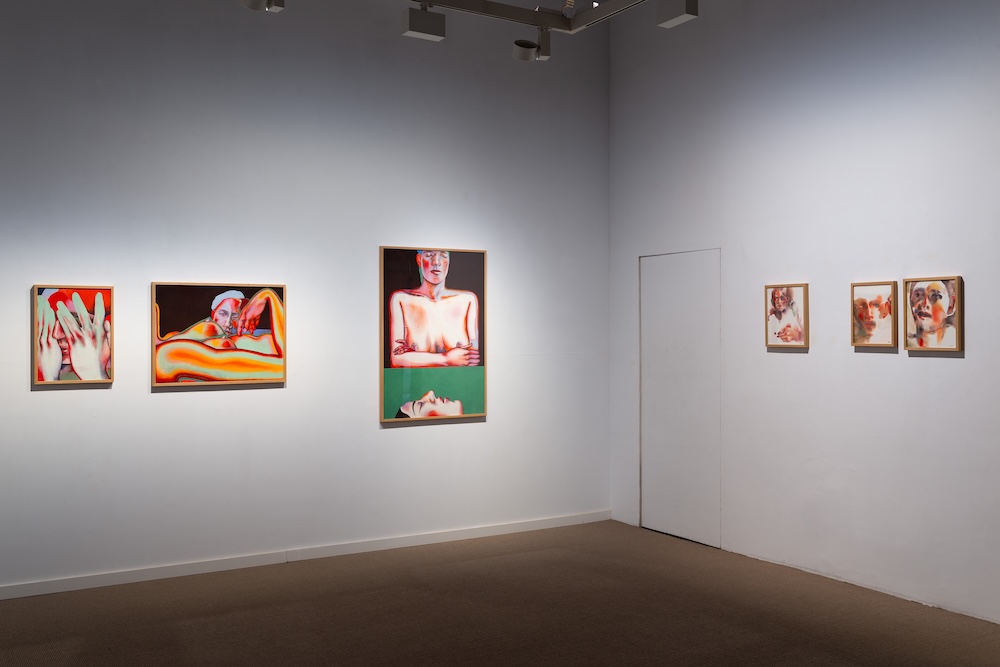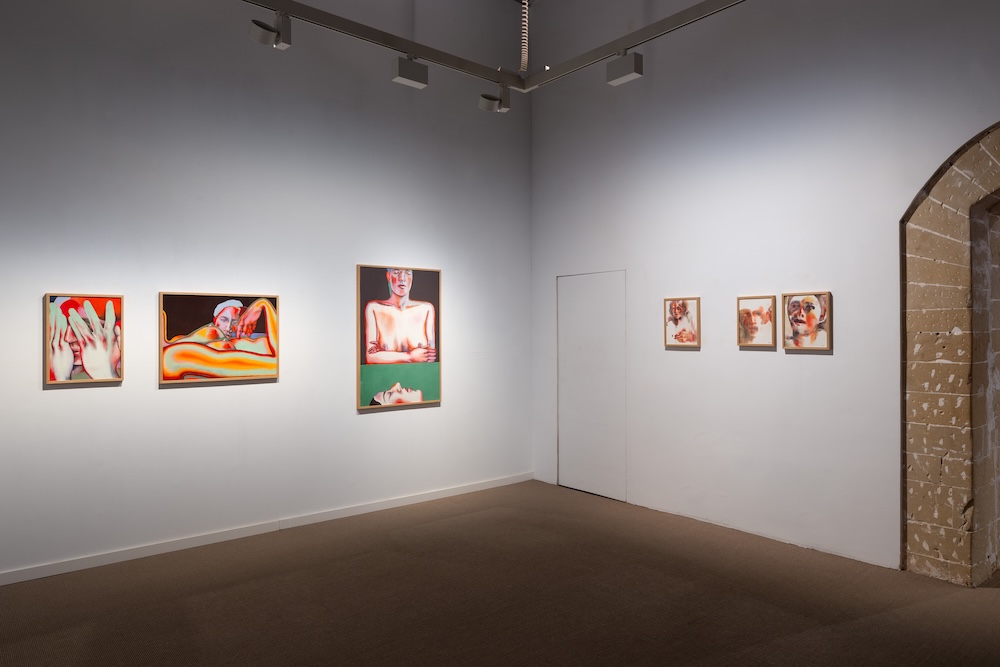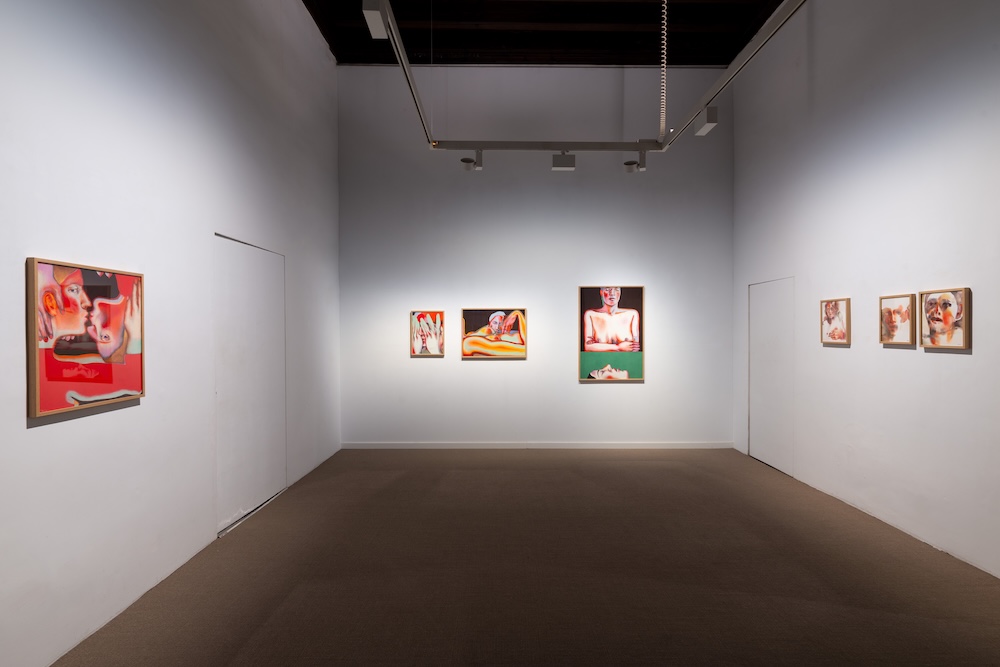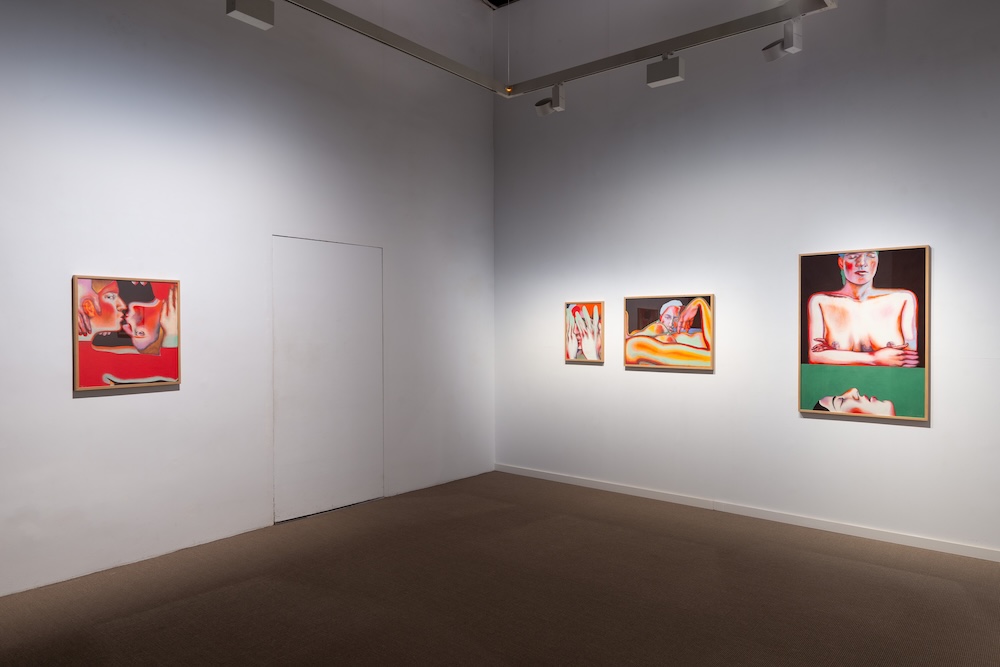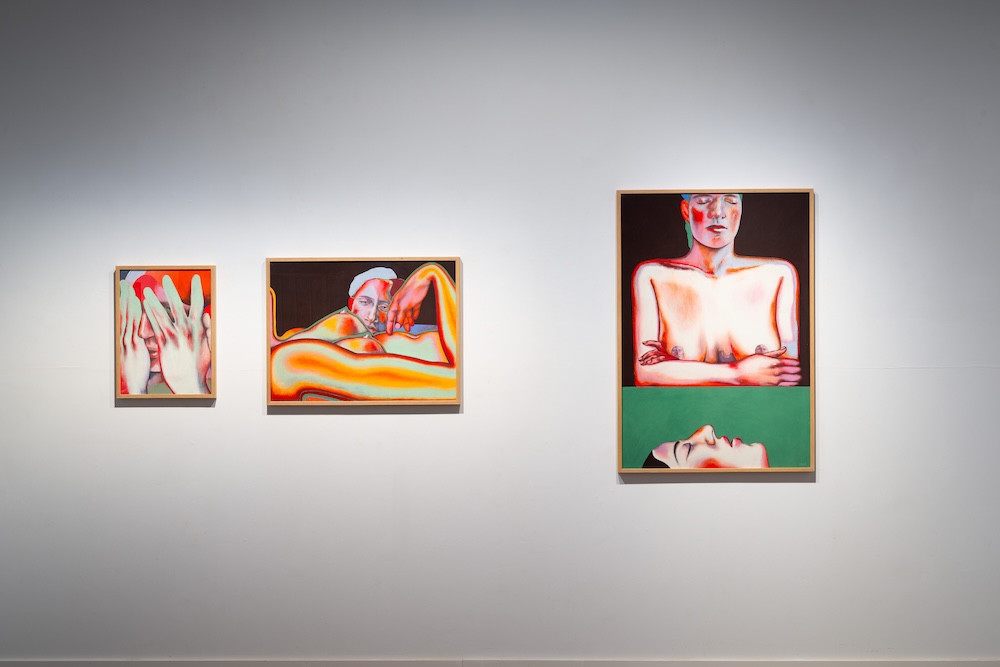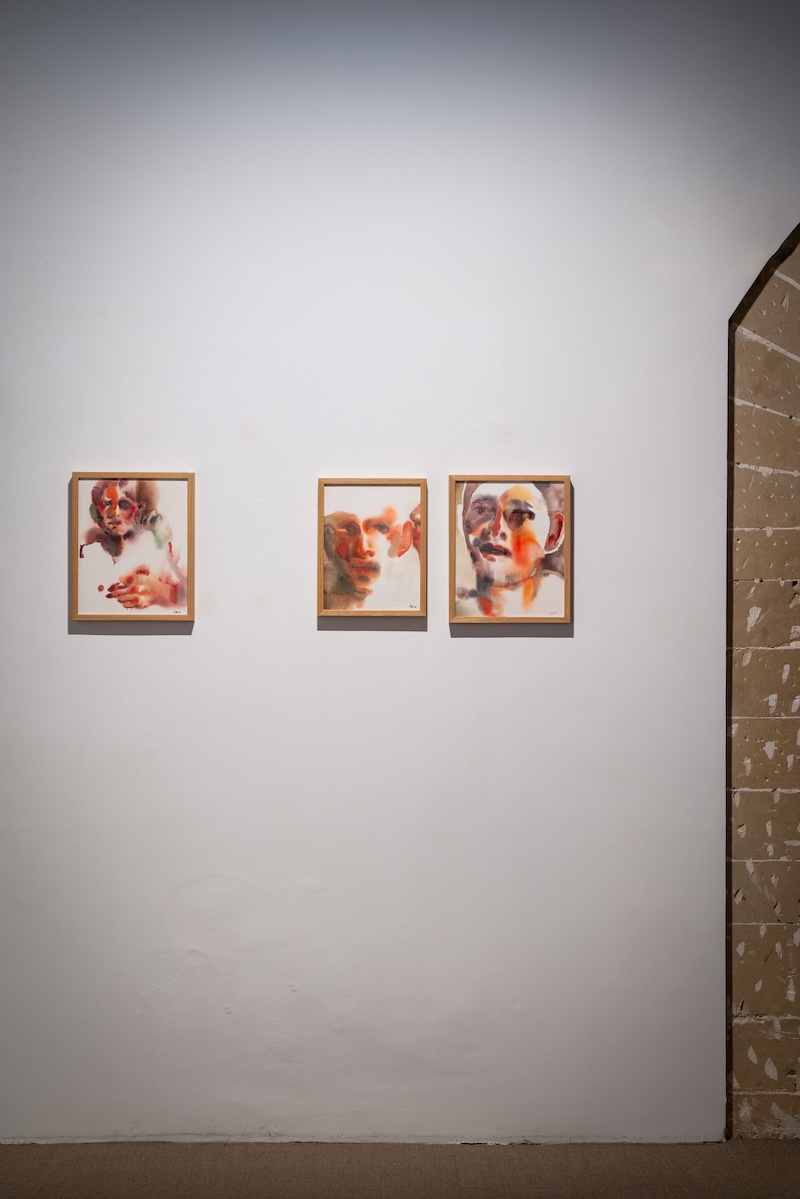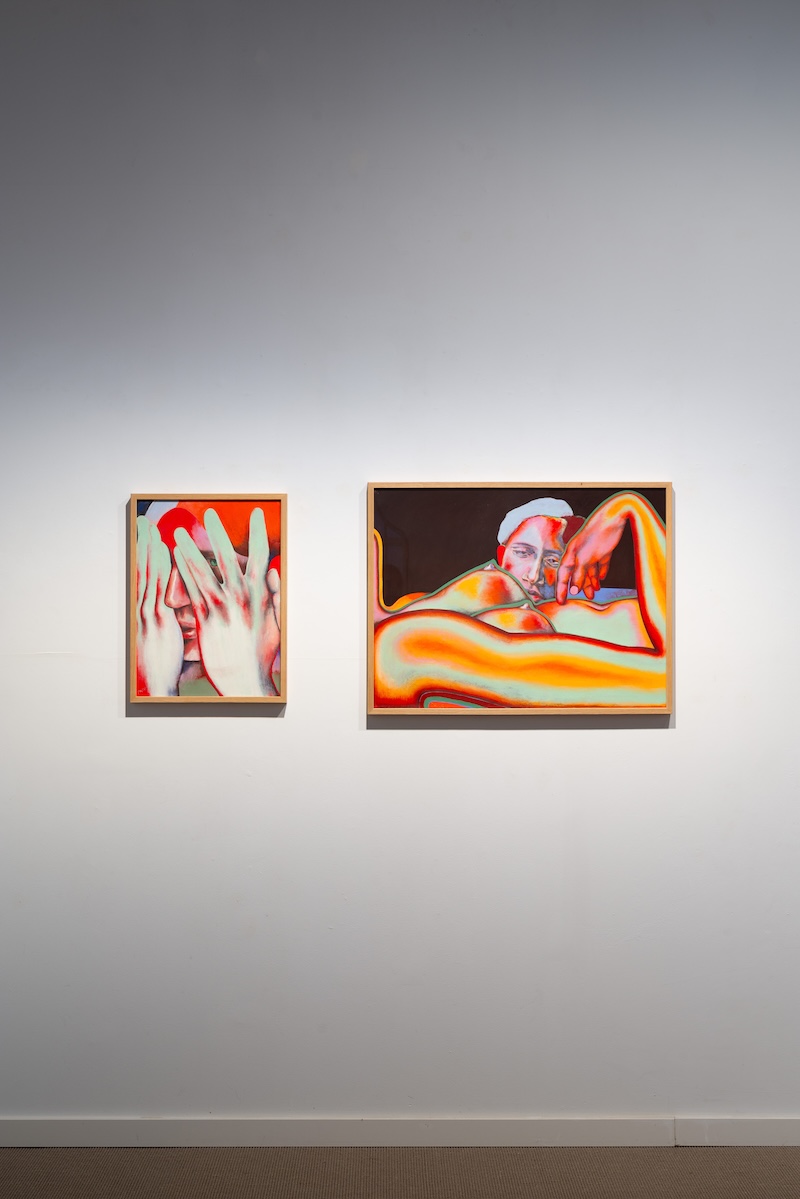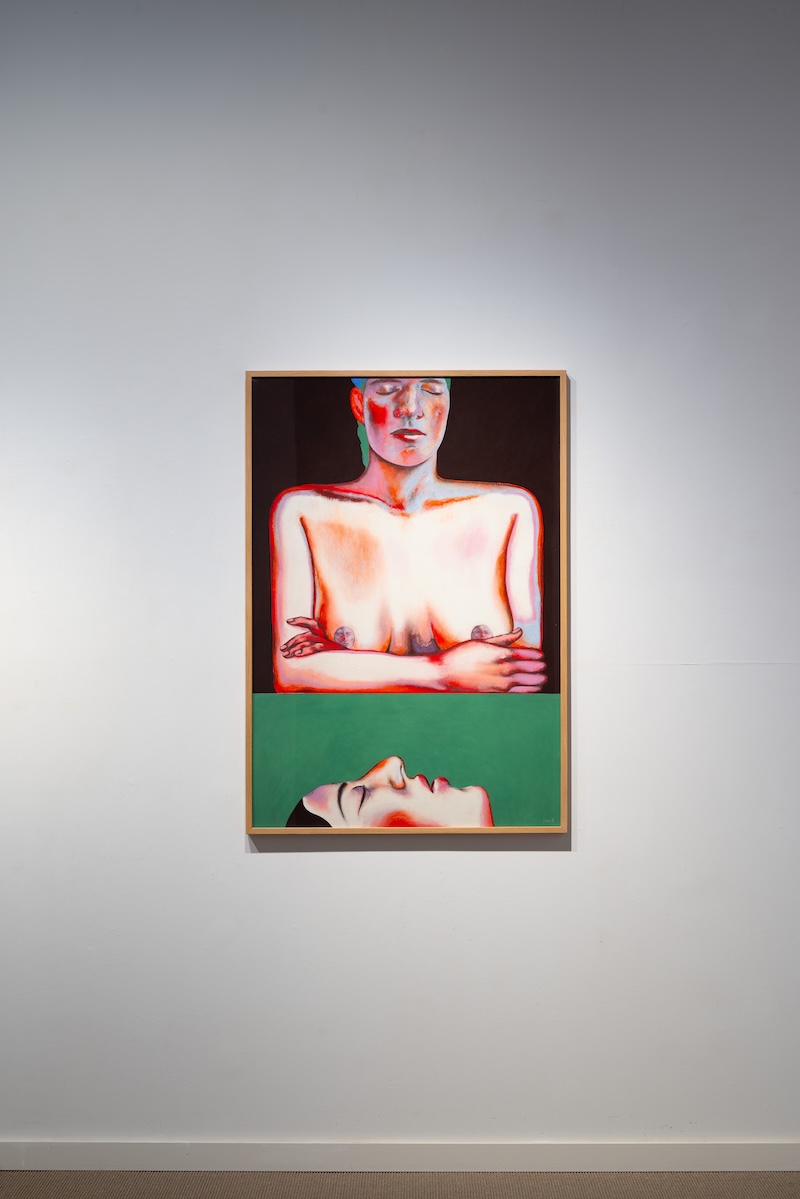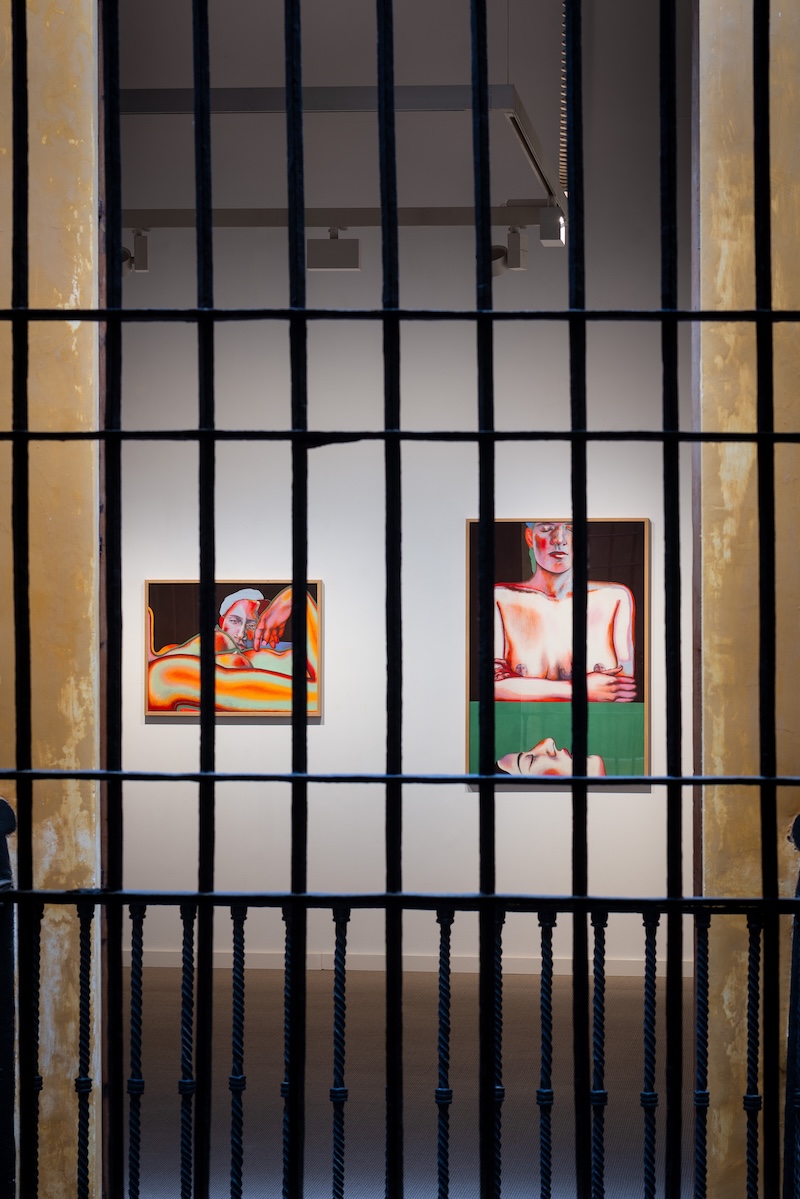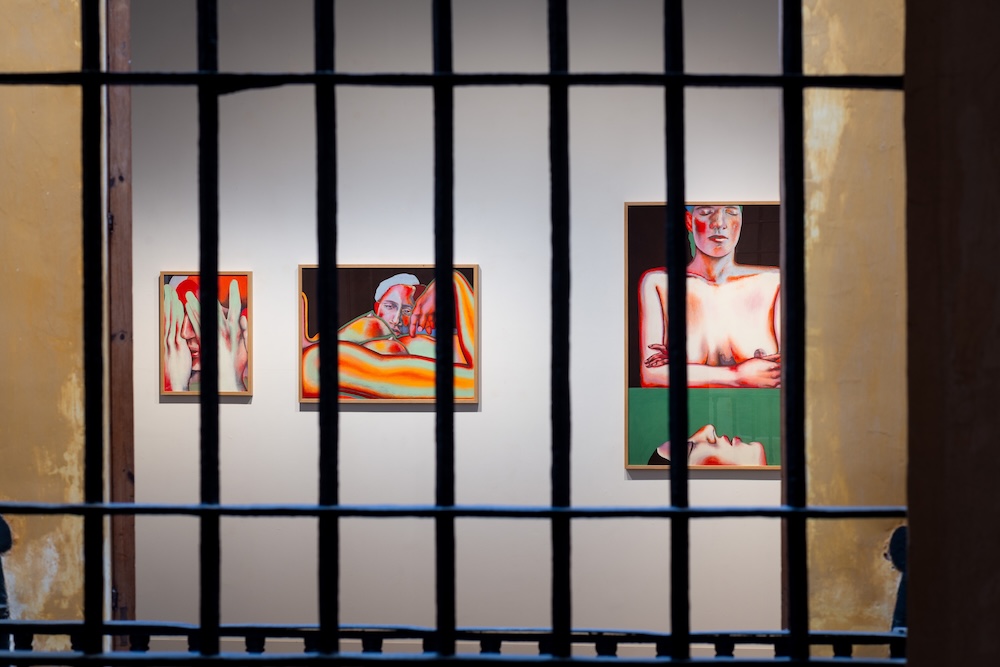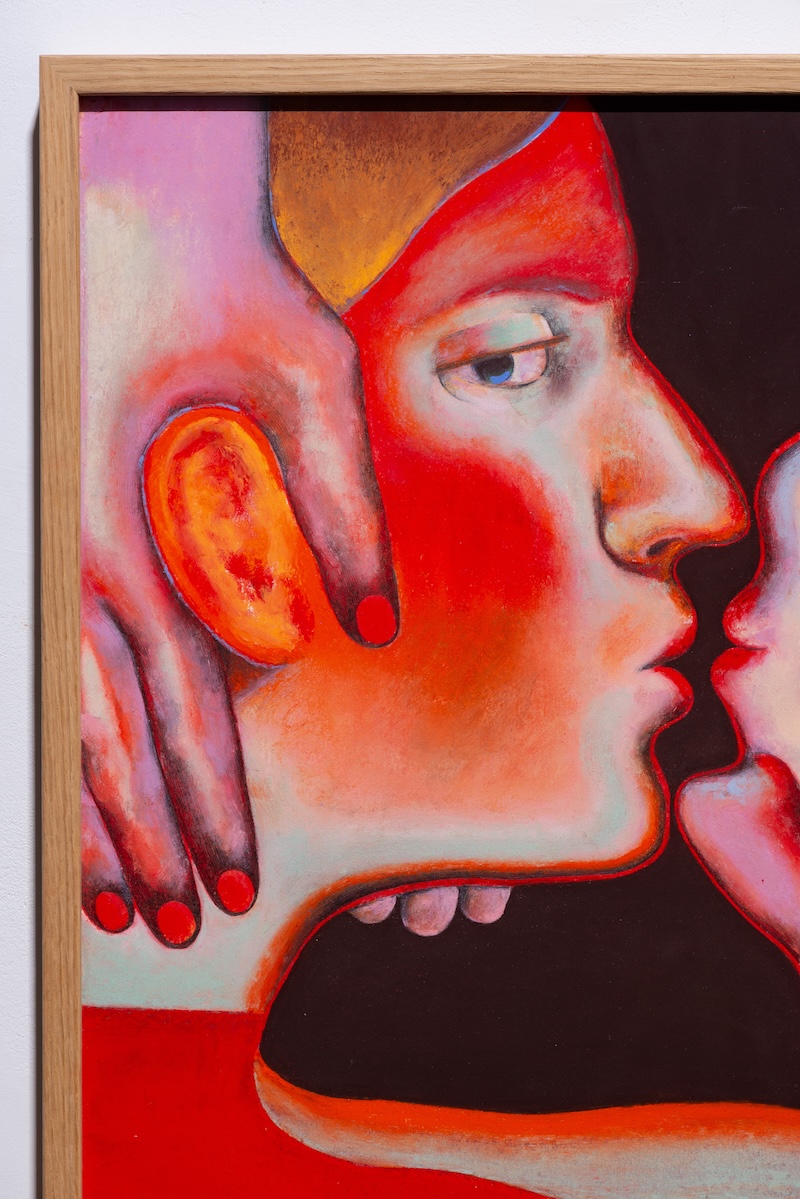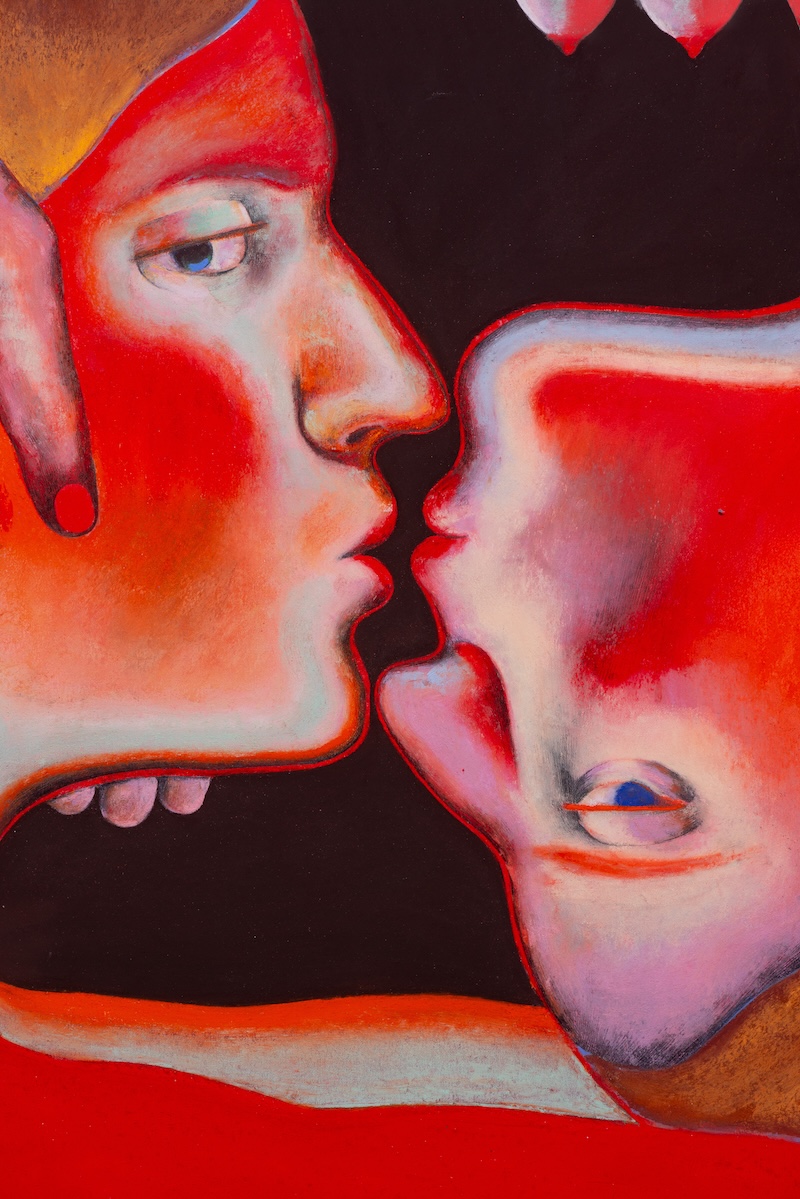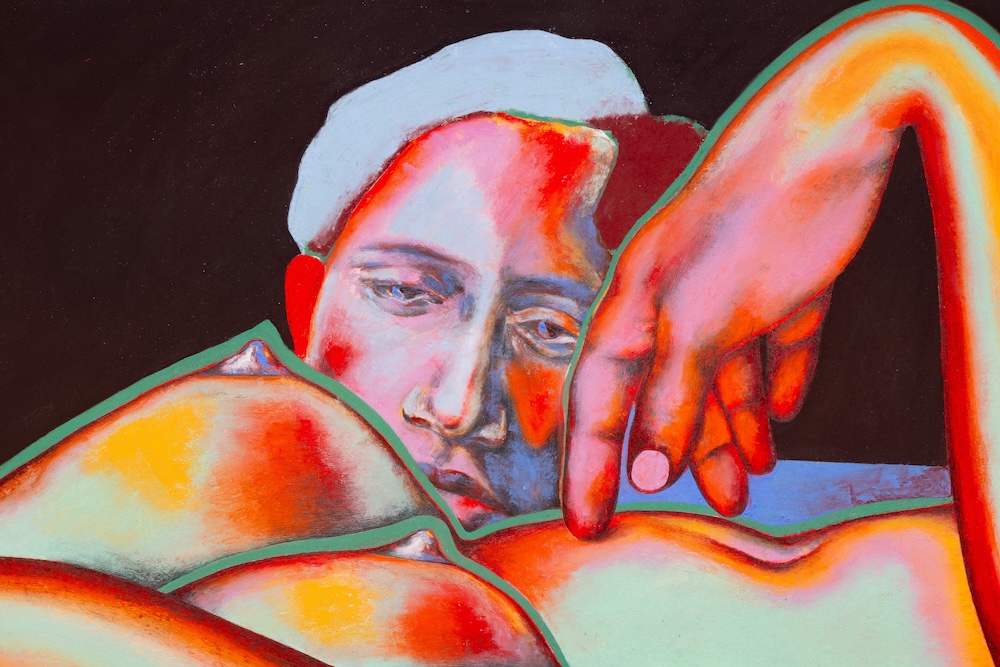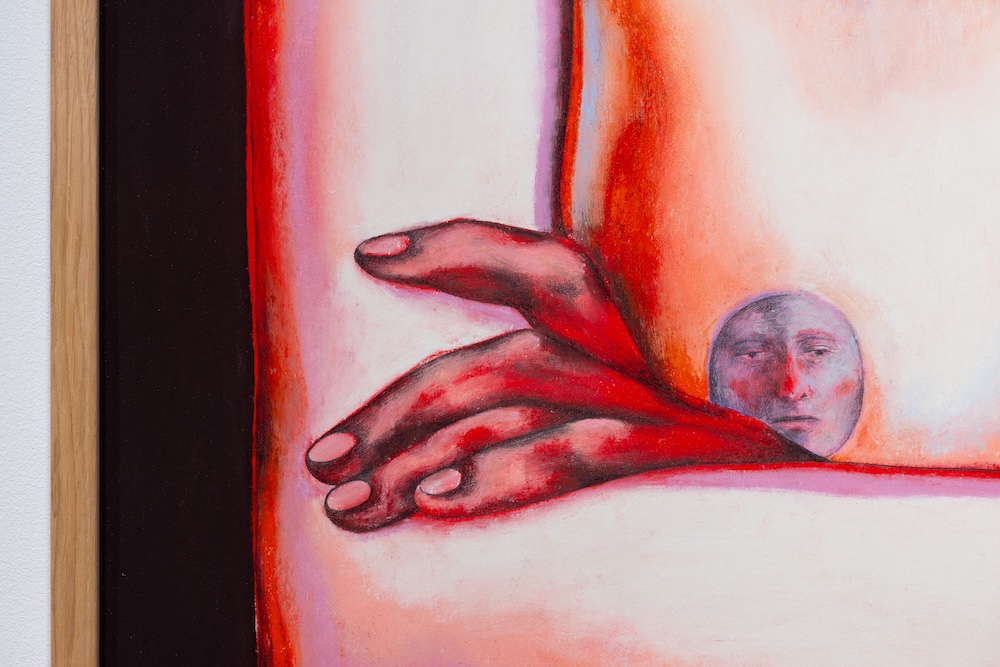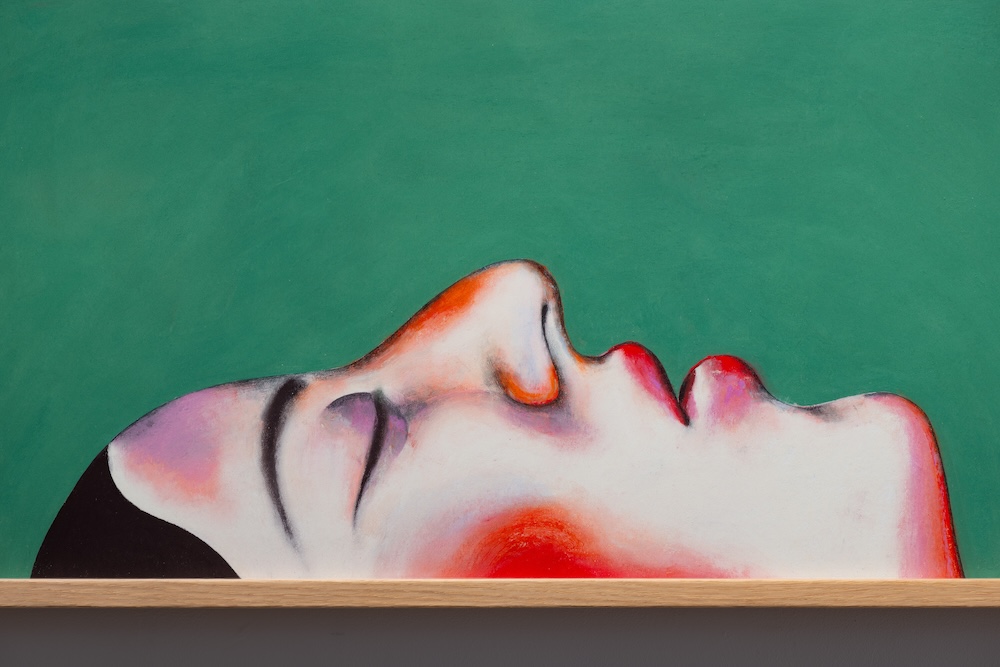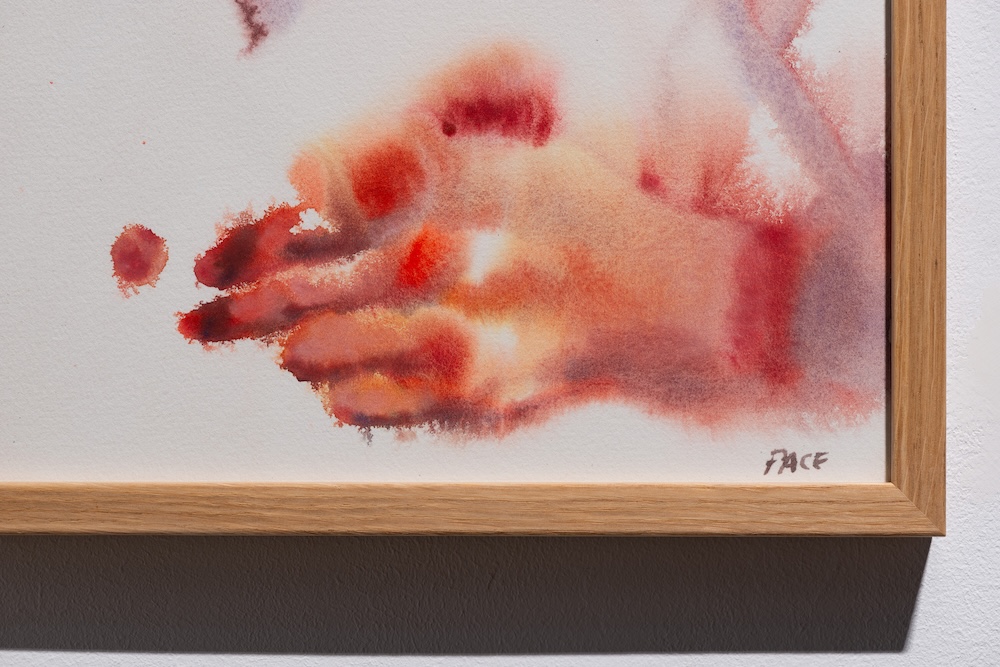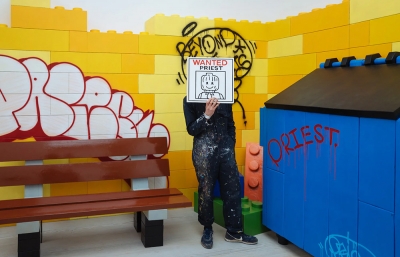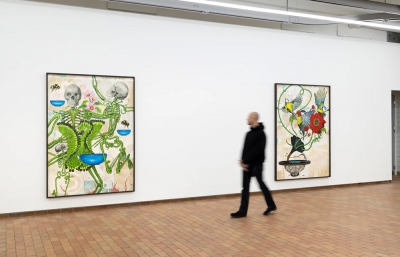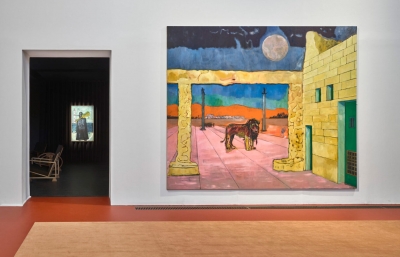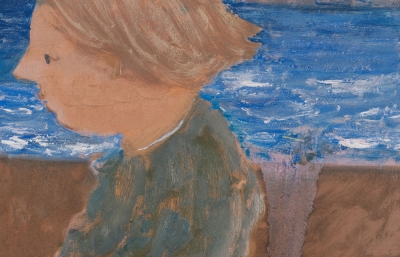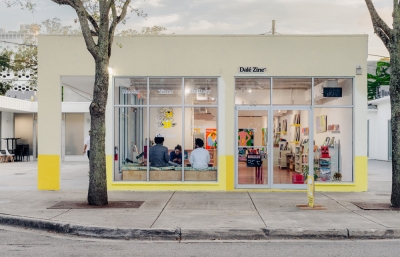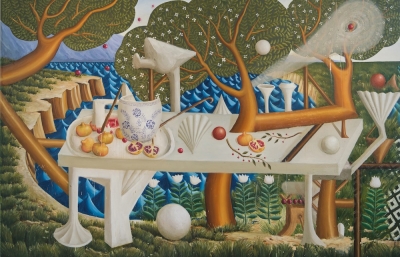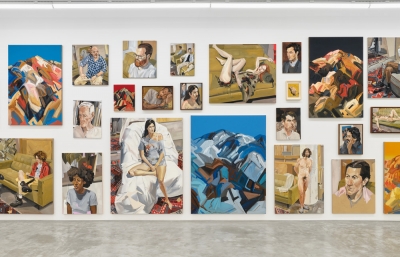For their Spanish debut at Pelaires Cabinet titled All I Do the Whole Day Through, Pace Taylor prepared a small suite of pastel drawings and watercolors that deal with desire and intimacy. While their previous work referred to this complex and multifaceted psychological and emotional force to some extent (desire for social acceptance, for change, within art practice), these new drawings and watercolors directly relate to desire in relationships and sexuality.
And right there, at the beginning of this introduction, the term “drawing” creates a bit of confusion while looking at the Portland-based artist’s oeuvre. Technically falling in that category because of the chosen medium and support (pastel and paper), the work’s almost painterly appeal makes the term slightly non-fitting. And this is the direct result of Taylor’s conscious effort to handle it in a way that pushes pastel outside of what is typical of the medium, closer toward the ubiquitous painterly gestures, surfaces, and textures. The use of its specific luminosity, the velvety surface, and the way it interacts with the paper’s fluffy, porous surface creates certain textural moments that successfully “make up” for the lack of marks easily achieved with viscous medium.
Funnily enough, pastels weren't Taylor‘s first choice, but with time, they proved to be the right choice for the kind of sensibility and atmosphere they wanted to convey. As a queer trans person, they’re disavowing the existing categories or structures because they do not serve anyone, and the work holds onto a similar attitude or atmosphere. Stemming from drawing, illustration, and representational portraiture but employing the traditional medium in a way that evokes physical qualities of paint, the visuals purposely feel open, ambiguous, and fluctuating. By clashing the flatness against the at times exaggerated depiction of volume, things tend to become disorienting or even grotesque. Reflecting on their experience and the idea that the body is a strange thing to inhabit or be in, somewhat peculiar scenes are dominated by kaleidoscopic figures with elongated limbs, uncommon facial features or expressions, skewed perspectives, etc. The stories could easily be going in different directions, as the regularly androgynous protagonists don’t reveal their real emotions or intent transparently. And in these particular examples, these ambiguities and differences are further emphasized with the employment of Surrealism or fantastical realism elements, pushing the images further away from reality and making them more open-ended.
With watercolors, the approach and way of thinking about the creative process shift significantly, as the medium demands quicker responses and decisionmaking. Taylor reaches for something recognizable in stains and blots, converting them into portrayals of faces or scenes with an interior luminosity. Where pastels allow for the most direct control of every tiny speckle of medium to be manipulated or handled on the paper, the watercolor, especially when done wet-on-wet, grants only a certain amount of control over how the medium acts on the surface. This results in a different type of aforementioned ambiguity or grotesqueness while also having its moments of absolute beauty flashing in between otherwise Rorschach test-like blots of color. At the same time, this quick, intuitive, and spontaneous way of working taps deeper into the subconscious and closer to the Surrealist idea of automatic drawing, as well as the notion that each person has their own visions, reality, and desires.
The frequent addition of a noticeable, almost clown-like blush on the cheeks or ears suggests anxiety, emotion, and other “big feelings,” which instantly make the protagonist feel more vulnerable and therefore, more relatable. Taylor utilizes the position of artist and creator as a conduit for experiences, emotions, and thoughts, leaving many things open for the viewer. They merely put themselves and us into a certain feeling rather than imposing any thoughts or offering any answers. Considering how understanding our own, let alone others', desires can cause fear or anxiety, desire acts as both a glue and a disruptor in relationships, bringing two people together while also creating distance. This includes the effect of other people on our wants and desires, and how that influences us. Primarily emotionally, but also in the way we adjust or modify our body accordingly, and further on, how all of that affects our own relationship with our body. And this is particularly important because Taylor uses art-making primarily to express, give shape to, observe, and perhaps better understand the complex journey of navigating one’s feelings and desires in relation to external expectations. It’s quite literally, “ all they do the whole day through.”
—Saša Bogojev, curator of the exhibition





